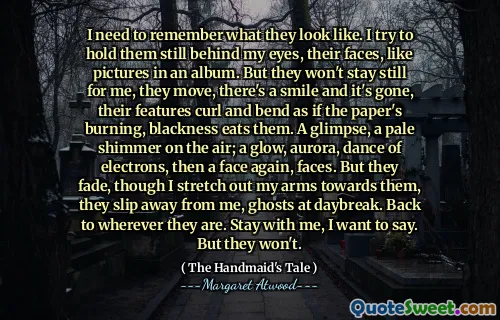The moon on the breast of the new-fallen snow. The sky is clear but hard to make out, because of the searchlight; but yes, in the obscured sky a moon does float, newly, a wishing moon, a sliver of ancient rock, a goddess, a wink. The moon is a stone and the sky is full of deadly hardware, but oh God, how beautiful anyway.
In this excerpt from The Handmaid's Tale by Margaret Atwood, the moon is described as a delicate presence against a backdrop of fresh snow, representing a sense of hope despite the harsh realities of the world. The imagery emphasizes the contrast between the natural beauty of the moon and the oppressive environment created by technology, symbolized by the searchlight illuminating the dark sky.
This poetic reflection underscores the coexistence of beauty and danger in the protagonist's life. The moon, characterized as both a goddess and a mere sliver of rock, suggests a yearning for freedom and yearning amidst a landscape marred by control and threat. Atwood masterfully captures the complexities of finding beauty in a bleak setting, highlighting the resilience of the human spirit.






